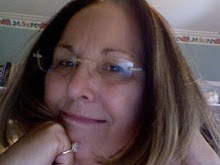
This family image was a standard in the 1950s. I grew up with the Anderson's and other television families such as Ozzie & Harriette and the Beaver. Andy Griffith, son Opie, and Aunt Vie were the ideal single parent unit.
That ideal is still in the hearts of a very few parents today but they are now a rarity and statistics are proving it is so.
From the PEW Research Center comes this finding July 1, 2007.
http://pewresearch.org/pubs/526/marriage-parenthood
------------------------------------------------
As Marriage and Parenthood Drift Apart, Public Is Concerned about Social Impact
A Generation Gap in Behaviors and Values
Younger adults attach far less moral stigma than do their elders to out-of-wedlock births and cohabitation without marriage. They engage in these behaviors at rates unprecedented in U.S. history. Nearly four-in-ten (36.8%) births in this country are to an unmarried woman. Nearly half (47%) of adults in their 30s and 40s have spent a portion of their lives in a cohabiting relationship.
Cohabitation Becomes More Prevalent
With marriage exerting less influence over how adults organize their lives and bear their children, cohabitation is filling some of the vacuum. Today about a half of all nonmarital births are to a cohabiting couple; 15 years ago, only about a third were. Cohabiters are ambivalent about marriage – just under half (44%) say they want to marry; a nearly equal portion (41%) say they aren't sure.
------------------------------------------------
What is the ideal family today? What does this mean for YOUR own children and future grandchildren? A scary thought.
Consider the Ozzy Osborn family image. I fully expect to be attacked for pointing to this likeable rag-tag Ozborn family but their philosophy of life, behavior, their adoring fans, and the media who gives them publicity, are just a reflection of today's twisted values and morals. It is twisted. They try to be friends with their children instead of parents. Their children are beyond respectful of any one or anything and forget either of them submitting to any authority but their own.
For me this is an absurity in a twisted culture.
What is today's standard of behavior? America for the most part has none.
Now, understand this. I know the great evils of the 1950s and 1960s. Evil existed but it was surpressed in our day. The racism, the immorality that was going on in spite of those pure images was deplorable. I am glad that racism was exposed. Man is just as sinful now as then. That is not the issue. However, when you compare today's culture that the near past, I personnally would rather live then. It was more wholesome, more moral, and a more eithical time generally speaking for the majority of people because shame was present. Evil was absolutely evil. Unfortunately with the religion of secular humanism and the rejection of absolutes, America has slid down hill culturally speaking.
Today "good" is being called evil and evil is being call "good."
Isa 5:20 - "Woe unto them that call evil good, and good evil; that put darkness for light, and light for darkness; that put bitter for sweet, and sweet for bitter!"
The difference then is this: evil was not accepted as good by the masses.
LOST FOREVER . . .
That wholesome image of the Anderson family was encouraged at school by our teachers, and re-enforced in our school literature. Christian values were always the under lying unspoken theme. Whether one is Jew, Gentile or atheist, those Christian values never hurt anyone. My homeroom teachers usually read a verse of scripture to the class and we had a short prayer to start our day. That was a good thing; today it is considered evil.
Our culture was so different from todays. Want to know the biggest problem in my high school in the early 1960s?

The terrible problem of gum in school. What else is there to say? (In my whole school I think there was about a handful of girls who "had" to get married and they usually did.)
Since I am a person of deep Christian faith I can welcome innocent children into this world. Yet, I worry how hard it will be for my own children and future grandchildren. Fortunately, they have a strong faith and I know that that will sustain them in their marriages in spite of this culture.
This blog is to remind us all of what we are up against.






